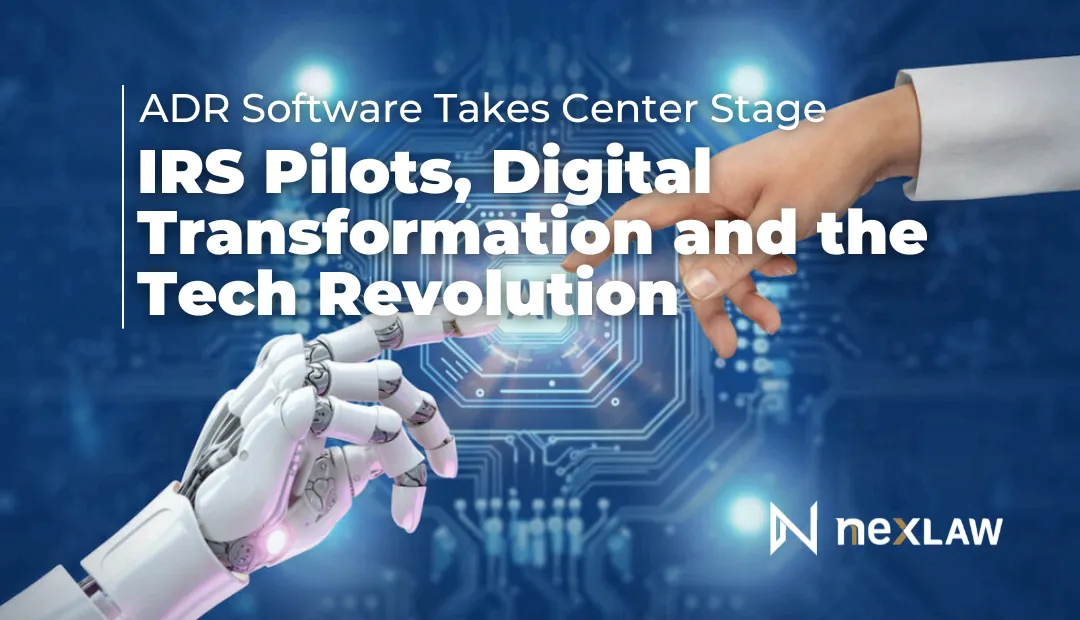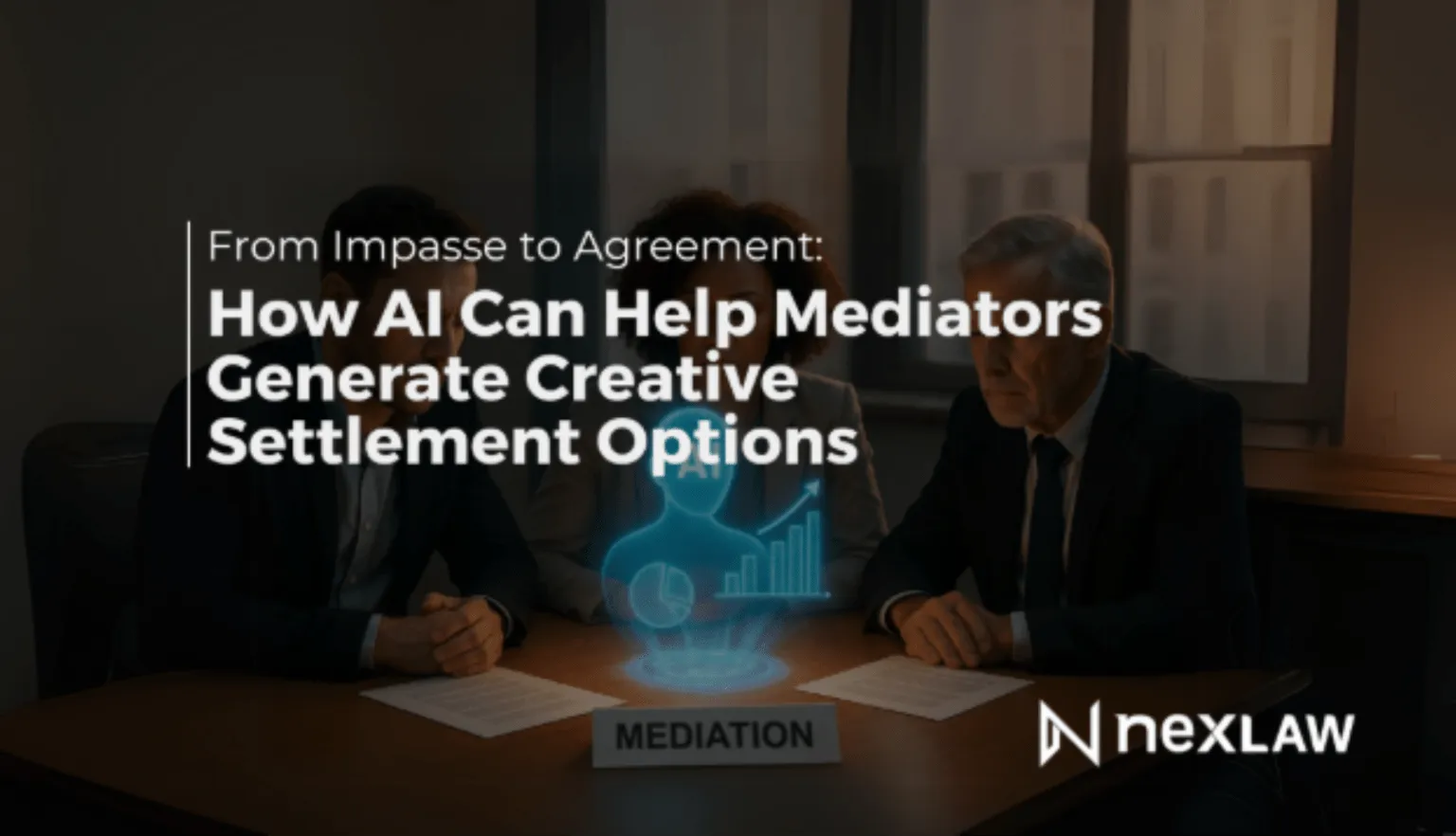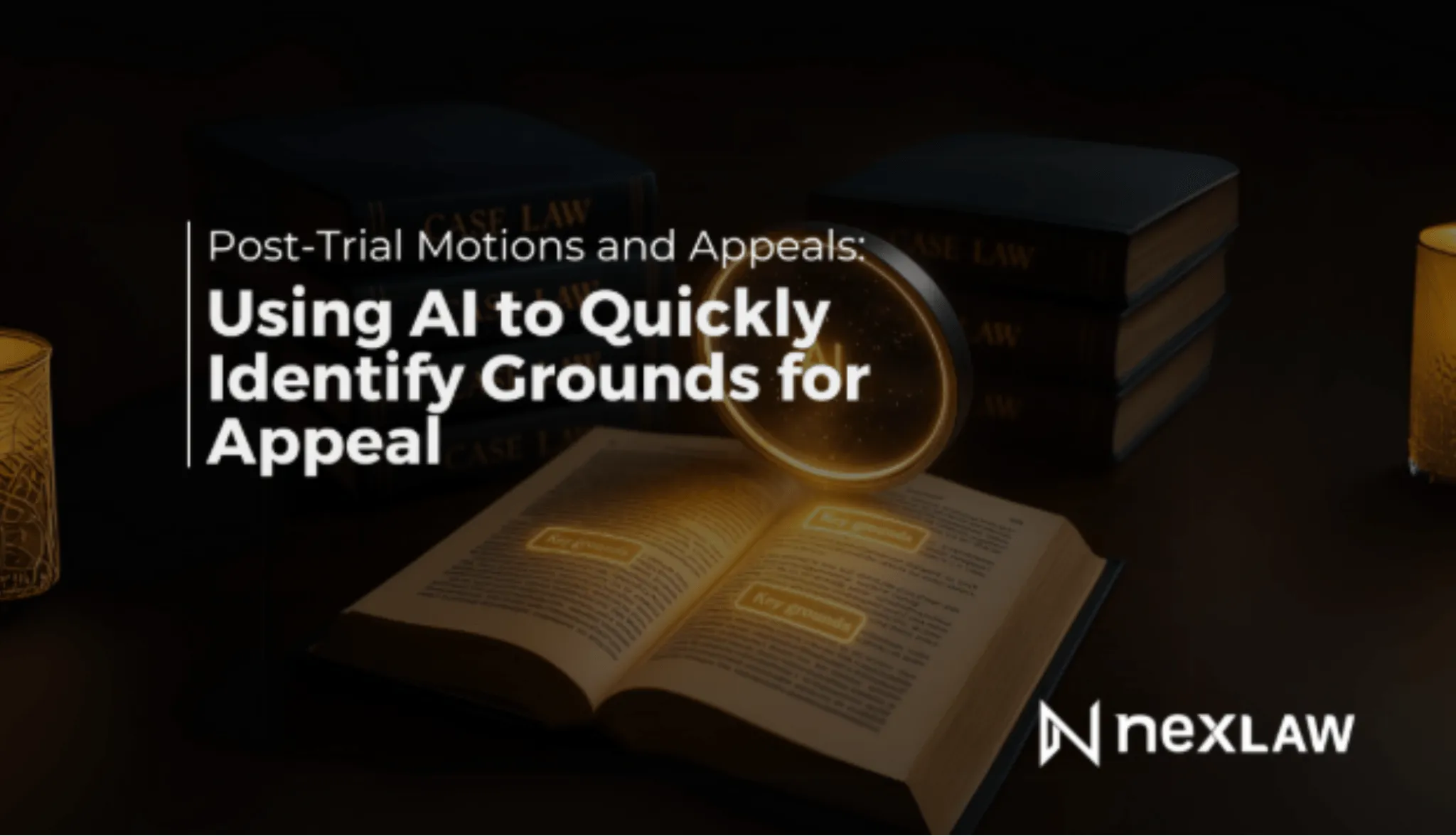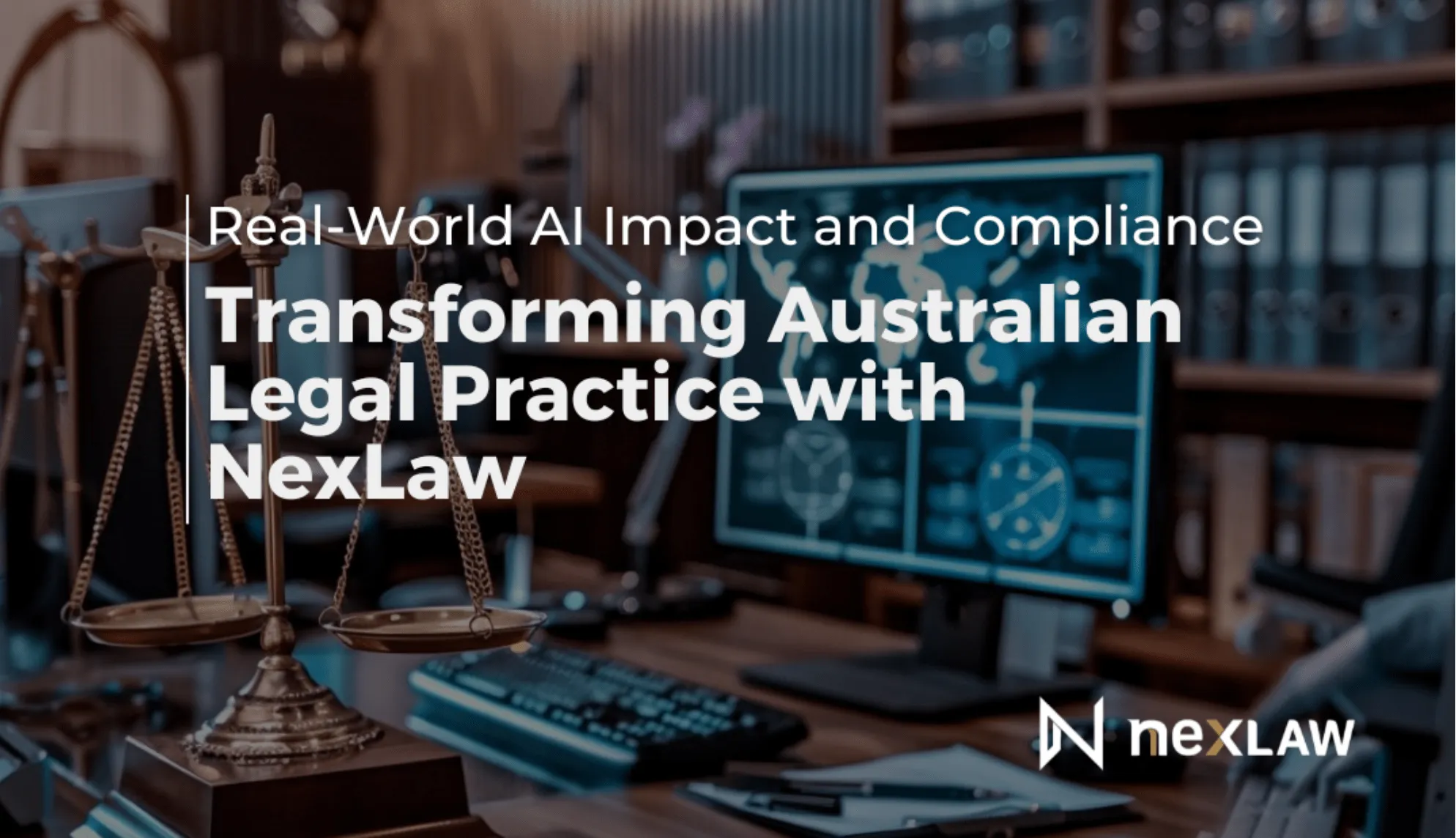A Transformative Moment for ADR and the Software Powering It in the United States
Alternative Dispute Resolution (ADR) has long been promoted as a pragmatic, cost-effective alternative to traditional litigation, particularly for corporations seeking to avoid the high costs and adversarial nature of court battles. Now, with the surge in ADR software, efficiency and accessibility are reaching new heights. Today, a confluence of regulatory reform and technological innovation is reshaping the landscape, offering new hope for legal professionals and their clients.
Unlock Legal Insights Instantly
IRS Unveils Ambitious ADR Pilot Programs and Software Integration
In January 2025, the Internal Revenue Service (IRS) announced a suite of pilot programs designed to revitalize and expand its existing ADR offerings. Critically, these programs are designed to integrate with modern ADR software to enhance efficiency and user experience. These initiatives are part of a broader transformation effort aligned with the IRS Strategic Operating Plan, seeking to make dispute resolution faster, more collaborative and accessible for taxpayers at all levels.
Fast Track Settlement (FTS): A New Approach with Software Support
Historically, the IRS has offered Fast Track Settlement (FTS) as a voluntary mediation program, allowing taxpayers and the IRS to resolve disputes while the case remains under examination. Integration with sophisticated ADR software platforms is now a key element, providing seamless case management and communication. An independent mediator from the IRS’s Office of Appeals facilitates discussions, aiming for a mutually agreeable resolution without the rigidity or cost of litigation.
The latest pilot introduces several critical changes, all optimized for software-driven workflows:
Issue-Based Eligibility
- Issue-Based Eligibility has transformed how taxpayer cases can access Fast Track Settlement (FTS).
- Previously, a single ineligible issue would exclude the entire case from FTS consideration.
- The pilot program now allows FTS to be applied selectively to eligible issues, even when other issues in the same case remain outside its scope.
- This process is streamlined through advanced categorization features available in ADR software.
Parallel Access to Mediation
- Participation in Fast Track Settlement (FTS) no longer prevents taxpayers from seeking Post-Appeals Mediation (PAM).
- This change provides taxpayers with greater flexibility in navigating the resolution process.
- Integrated software dashboards now make managing these parallel processes easier for all parties involved.
Executive Oversight
- Requests for Fast Track Settlement (FTS) or Post-Appeals Mediation (PAM) now require first-line executive approval for denial.
- This requirement ensures greater transparency and accountability in the dispute resolution process.
- All decisions are now tracked within ADR software systems for complete documentation.
Clear Communication
- Taxpayers now receive formal explanations when their requests for Fast Track Settlement (FTS) or Post-Appeals Mediation (PAM) are denied.
- This new requirement promotes procedural fairness in the dispute resolution process.
- Automated notification systems in ADR software facilitate timely and consistent communications with taxpayers.
Streamlined Requirements
- The pre-FTS managerial conference requirement has been removed for certain taxpayers.
- This change reduces administrative hurdles in the dispute resolution process.
- ADR software now handles processes that previously required manual intervention.
To illustrate these changes, consider the following table:
| Feature | Old Approach | New Pilot Program | Software Integration |
|---|---|---|---|
| Issue Eligibility | All issues must be FTS-eligible | FTS applies to eligible issues, regardless of others | Automated categorization and eligibility assessment |
| Mediation Access | FTS disqualifies PAM | FTS does not disqualify PAM | Integrated scheduling and access management across FTS and PAM |
| Denial Oversight | No executive approval required for denials | First-line executive approval required | Tracking and audit trails for denial requests |
| Explanation of Denials | No formal explanation required | Explanation required for denials | Automated notification systems with detailed reasons |
| Managerial Conference | Required for certain taxpayers | Removed for SB/SE and Tax Exempt/Government Entities | Elimination of manual scheduling and documentation |
Post-Appeals Mediation (PAM): A Second Look Facilitated by Technology
PAM (Post-Appeals Mediation) provides taxpayers with non-binding mediation after an Appeals conference, utilizing mediators—often other Appeals officers—to help reassess unresolved issues.Software platforms enhance PAM accessibility by facilitating document sharing, scheduling, and communication between all parties. The pilot program ensures PAM remains voluntary and confidential, requiring agreement from all parties, with these processes managed through secure software interfaces.
Last Chance FTS: Raising Awareness with Software Integration
A novel addition is the “Last Chance FTS” pilot, targeting Small Business/Self-Employed (SB/SE) taxpayers. After a protest is filed in response to a 30-day or equivalent letter, Appeals will proactively inform taxpayers of their FTS options before the case transitions to Appeals’ jurisdiction. This aims to increase awareness and participation, rather than altering eligibility criteria, utilizing automated outreach tools within the ADR software.
To maximize the effectiveness of these pilots, the IRS plans to integrate various ADR software solutions, focusing on the following capabilities:
| Software Capability | Benefit | Implementation |
|---|---|---|
| Case Management | Centralized tracking and organization of all cases | Secure database with role-based access |
| Document Management | Secure storage and retrieval of case-related documents | Encryption and version control |
| Communication Tools | Facilitate secure and efficient communication between parties | Integrated messaging and video conferencing |
| Scheduling & Coordination | Automated scheduling of meetings and mediation sessions | Calendar integration and automated reminders |
| Reporting & Analytics | Generate reports and insights on ADR program performance | Customizable dashboards and data visualization tools |
| AI-Powered Assistance | Automate document review, legal research, and outcome prediction | Machine learning algorithms for case analysis and risk assessment |
Stakeholder-Driven Reform Enhanced by Software
These pilot programs implement recommendations from multiple sources: the U.S. Government Accountability Office, the Taxpayer Advocate Service, and stakeholder feedback from the IRS’s 2023 request for comment. The traditional appeals process remains fully available, ensuring ADR (Alternative Dispute Resolution) is offered as an option rather than a mandate. ADR software enhances taxpayer choice by providing clear comparisons between traditional appeals and alternative resolution pathways.
Lessons from Corporate ADR: Software Adoption and Strategic Commitment
Despite the promise of ADR, its effectiveness hinges on organizational commitment and the strategic adoption of ADR software. Companies that prioritize ADR—even when confident in their legal position—have realized substantial benefits through optimized software solutions: lower costs, faster resolutions, and preserved relationships. The integration of ADR software ensures that these benefits are scalable and sustainable.
A study by Harvard Business Review, highlighted the success and pitfalls of ADR implementation in corporations, particularly in the context of software adoption. Key takeaways from the study are summarized below:
| Insight | Description | Software Implications |
|---|---|---|
| Commitment from Top Management | ADR must be a top priority, not just a procedural formality. | ADR software should be integrated into the company’s strategic planning and decision-making processes. |
| Avoid Litigation-in-Disguise | ADR should not simply replicate the complexities and costs of litigation. | ADR software should streamline processes, reduce administrative overhead, and promote transparency. |
| Focus on Relationship Preservation | ADR should aim to preserve or improve relationships between parties. | ADR software should facilitate communication and collaboration, and support the identification of mutually beneficial solutions. |
| Evaluate Lawyers on Dispute Avoidance | Lawyers should be evaluated not only on wins and losses but also on disputes avoided and costs saved. | ADR software should track and measure key performance indicators related to dispute avoidance and cost savings. |
| Embed ADR Clauses in Contracts | All commercial contracts should include ADR clauses specifying mediation or arbitration as the first method of settlement. | ADR software should facilitate the inclusion of standardized ADR clauses in contracts and provide tools for managing compliance. |
| Use Ombudspersons for Early Case Analysis | Ombudspersons should analyze cases at the outset to assess financial exposure and recommend ADR plans. | ADR software should support ombudspersons in conducting case analysis, assessing risk, and developing ADR plans. |
The key takeaway is that ADR only delivers on its promise when it is treated as the preferred method of dispute resolution, backed by top management, integrated into the company’s culture and contracts, and powered by robust software.
The Digital Revolution: Online Dispute Resolution and AI-Driven ADR Software
The next frontier for ADR is digital transformation, with ADR software at the forefront. The American Arbitration Association (AAA) and Suffolk University Law School have launched an Online Dispute Resolution (ODR) Innovation Clinic, aiming to create a digital platform for low-contest divorces and family law matters. This initiative leverages AI-powered tools, streamlined case management and real-time updates, all within a comprehensive ADR software ecosystem, with the goal of making ADR more accessible and scalable across jurisdictions.
ODR: Expanding Access and Efficiency Through Software Platforms
ODR platforms like ODR.com, now part of AAA’s portfolio, support mediation and arbitration for over 200 clients worldwide. These platforms offer configurable workflows, secure file sharing, panel management and online intake, making dispute resolution more efficient and less dependent on physical proximity, all features of leading ADR software.
The Role of Artificial Intelligence From Case Analysis to Outcome Prediction in ADR Software
Artificial intelligence is rapidly becoming integral to ADR software. AI-powered tools can:
- Analyze case data and legal precedents within the software
- Predict likely outcomes using algorithms integrated into the platform
- Automate document review and legal research directly within the software interface
- Generate insights to inform negotiation and settlement using data analytics tools
By reducing manual effort and surfacing actionable insights, AI enables legal professionals to focus on strategy and client service, rather than administrative tasks, all while leveraging the power of ADR software.
ADR Software as a Strategic Advantage
The convergence of regulatory reform and digital innovation is ushering in a new era for ADR in the United States. The IRS’s pilot programs promise to make tax dispute resolution more accessible and efficient, while the rise of ODR and AI-powered platforms like NexLaw.ai is transforming how legal professionals manage and resolve conflicts, emphasizing the central role of ADR software.
For law firms, in-house counsel and dispute resolution practitioners, the message is clear: embracing ADR and leveraging advanced technology is no longer optional. It is a strategic imperative that can deliver faster outcomes, reduce costs, and preserve valuable relationships, with ADR software as the linchpin.
As the legal landscape continues to evolve, those who adapt by prioritizing ADR, investing in digital tools, and fostering a culture of collaboration will be best positioned to serve their clients and organizations in the years ahead. NexLaw.ai, with its robust suite of AI-driven ADR solutions, stands out as a compelling option for legal professionals seeking to navigate this new reality with confidence and efficiency.
Stay Prepared with NexLaw.ai
If you’re unsure how changes in the ADR landscape affect your business or how to manage the transition, NexLaw.ai is here to help. Whether you’re a consumer advocacy group, a multinational e-commerce platform or a small trader updating your terms, NexLaw.ai simplifies the complex and empowers the complaint. Explore our platform or contact us directly to learn how NexLaw.ai can guide you through the evolving dispute resolution landscape.






